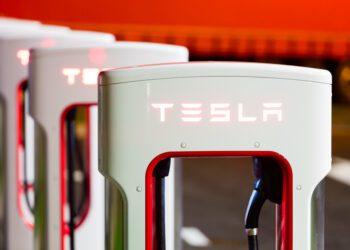According to Deloitte research, lessons learned from the pandemic are accelerating the evolution of urban environments across the globe for the betterment of residents’ health and well-being
Many lasting evolutions in urban spaces have happened in moments of great disruption. The Lisbon earthquake of 1755 prompted the creation of guidelines for seismic construction. The cholera outbreak in London in 1848 gave rise to the first health law in the United Kingdom. The Chicago fire of 1871 brought new building laws leading to more fireproof—and, ultimately, taller—structures. The COVID-19 pandemic could have a lasting impact, too, having accelerated the shift toward greener, more digital, and more inclusive cities across the globe.
Over the course of the last two years, we interviewed mayors, city officials, urban planners, academics, and citizens in cities around the world to identify the trends that are making urban living more sustainable, affordable, and human. One theme that emerged was cities’ increasingly important role in ensuring the health and well-being of their residents.
Data-enabled wellness
Cities currently represent just 3% of the world’s territory but harbor 55% of the world’s population. By 2050, it’s estimated that 70% of the world’s population will live in urban centers.
At an economic level, cities generate around 80% of the global GDP, and are responsible for 80% of energy consumption and more than 70% of carbon emissions and global waste.
When it comes to the health of both people and the planet, cities play a crucial role. By concentrating people and resources in one place, the urban environment creates health hazards as well as opportunities to improve health. For example, 90% of COVID-19 cases around the world occurred in cities, and yet the access and quality of health care is significantly higher in urban centers as compared with rural and remote populations often having poorer health outcomes.
Our global experience of the pandemic showed how interconnected we are as individuals and that our individual health and well-being are shaped by the health and well-being of the communities in which we live, work, and play, and yet our health systems have often been designed around the need of individuals. One of the trends that we believe will become increasingly common in cities is the rise of so-called smart health communities—reimagining public health, integrating well-being into urban design from the outset, and proactively addressing the drivers of health: the social, environmental, and economic factors that contribute to health outcomes.
A data-enabled, digitally connected “smart city” can make health care smarter when systems and data are integrated and interoperable across core health and other services, including public safety, the quality of housing, environmental health, social services, emergency services, and transportation. This can help to enable a real-time response to health crises, address inequities, and support the interconnected health and well-being goals of communities across the globe. A smart city can also better ensure health equity by enabling health care access for more and nurturing the social, economic, and environmental factors that contribute to all residents’ overall well-being, encompassing clinical, mental, social, emotional, physical, and spiritual health. For this promise to be realized, health literacy, health system navigation, and access to data are crucial factors to be addressed.
Digitalization has been a crucial lever in cities’ response to the pandemic, with tools monitoring contagion risk and ensuring that residents respect confinement and social distancing guidelines, while also enabling services to continue and economic activity to be carried out virtually. The pandemic has turbocharged digital transformation efforts in many cities and paved the way for the next generation of digital-ready cities. Out of necessity, many cities around the world rushed to implement unified digital platforms and develop ways to communicate and engage with citizens. They are making large investments in technologies and platforms to drive a personalized experience, with particular care around digital identity, cybersecurity, and privacy. For example, 83% of cities have made large technology investments to improve remote diagnosis and treatment, and telehealth services. This shows a clear shift in cities’ priorities regarding digital health service delivery.
A great example is Cascais, Portugal. The COVID-19 pandemic meant the local government was confronted by new and unprecedented challenges. In the battle to protect its citizens while continuing to provide services and maintain economic activity, Cascais leaders acknowledged the need for integrated management of the health threat, so they deployed a COVID-19 war room. This enabled city leaders to obtain a holistic, real-time view of the pandemic’s impact on the local population and manage the entire COVID-19 response process on one platform, maximizing the efficiency of their health and emergency resources, securing citizen engagement, and shoring up residents’ morale and sense of security.
We see this trend being applied in cities all over the world. For instance, Chicago has established a highly interconnected health and wellness ecosystem, and Louisville, Kentucky, is prioritizing the development of smart health communities with a focus on the optimal use of technology to facilitate data collection and drive informed interventions.
As Jeff Merritt, head of urban transformation at the World Economic Forum, told us, “It took a pandemic for us to dive in and realize the capabilities of our technology—to prove that we can seamlessly convene individuals across the world and enable productive dialogues, to demonstrate that we can connect with medical professionals from our home without sacrificing quality or privacy.”
Cityscapes are going green
Of course, implementing digital technologies and even improving access to traditional health care aren’t the only ways cities can foster public health. Cities planned and designed for people, with “green streets” and public spaces as centers of social life, play a major role in creating a healthy environment.
Cities around the world are recognizing that a green approach to urban planning has the potential to lower urban temperatures, mitigate air pollution, and build natural environmental resilience. This focus on green spaces enhances populations’ quality of life, enriches physical and mental health, improves resilience and equality as part of an adaptation strategy, and reduces emissions, helping to meet the sustainability and climate goals of the Paris Agreement. We already see great examples of this planning in cities like Freetown, Singapore, Lisbon, and Shiraz.
Improving mobility is a significant factor in going green. The concept of the 15-minute city was developed primarily to reduce carbon emissions by decreasing the use of cars and motorized commuting time. It’s a decentralized urban planning model in which each local neighborhood contains all the basic social functions needed for living and working. Innovative urban mobility and planning solutions can help create a convenient, connected, and more sustainable future, contributing to stronger social networks and the quality of living, and reducing congestion, air pollution, and accidents, thereby saving lives.
For example, Saudi Arabia is building a futuristic, mega-city called NEOM or “New Future,” in desert bordering the Red Sea. Covering a total area of 26,500 kilometers/10,200 square miles, NEOM will incorporate smart city technologies. The state has pledged at least US$500 billion for the project and is soliciting further investment. All essential daily services—schools, medical clinics, recreational facilities, and green spaces—will be within a five-minute walk. Ultra-high-speed transit and autonomous mobility solutions will make travel easier and give residents more time to devote to their health and well-being. The LINE, a 170-kilometer belt of hyperconnected, AI-enabled communities, without cars and roads, powered by 100% clean energy, and built around nature will provide pollution-free, healthier, and more sustainable environments for residents.
The pandemic highlighted how cities are community-minded by necessity. The inherent interconnectedness that can make them vulnerable to public health events and other disruptions can also make them more resilient. Some cities were able to respond to COVID-19 better than others because they had focused, in prior years, on building resilience and had the physical and digital systems in place. Our research revealed that city leaders the world over are now applying important lessons learned since 2020 to increase digital transformation in community care, remove barriers to care, and improve health equity.
By Miguel Eiras Antunes and Stephanie Allen
Article available here













Recent Comments